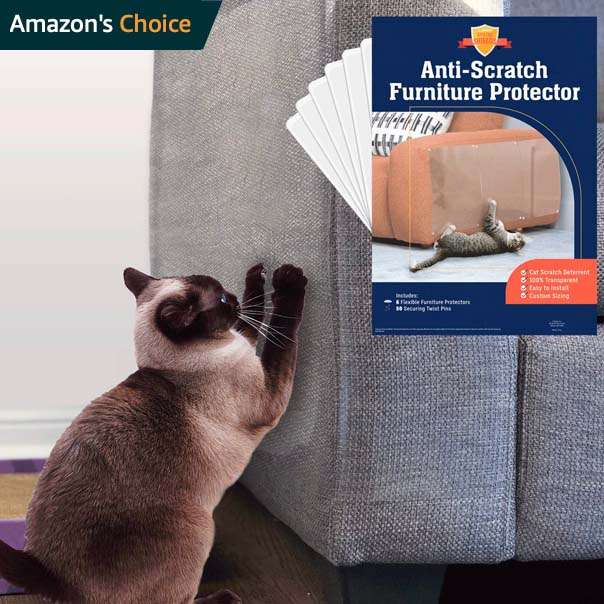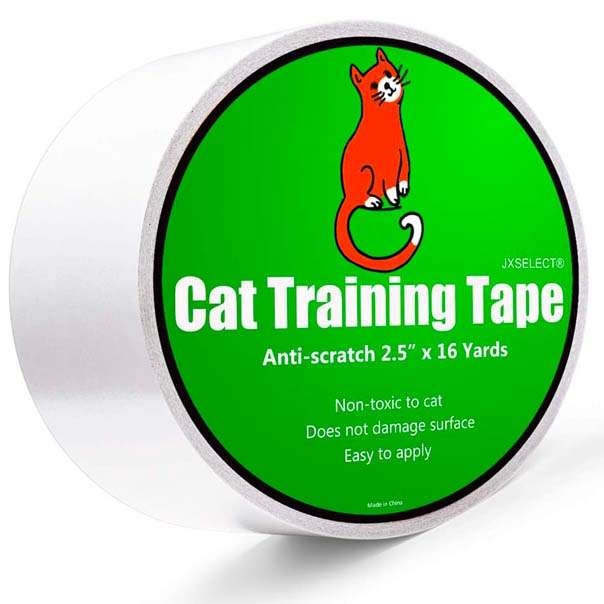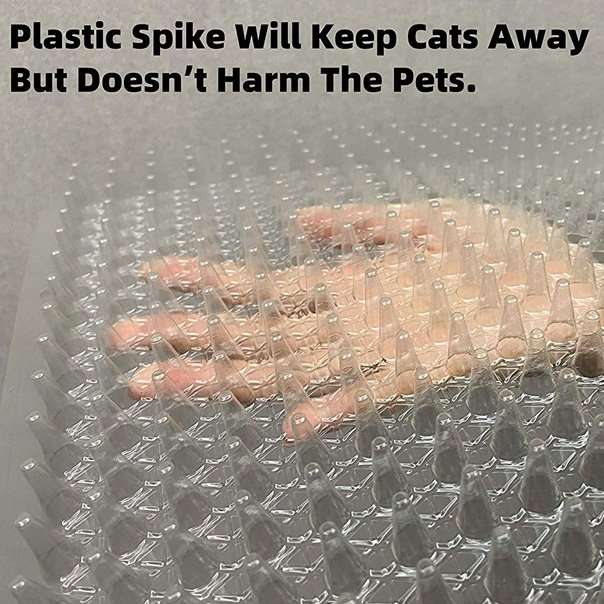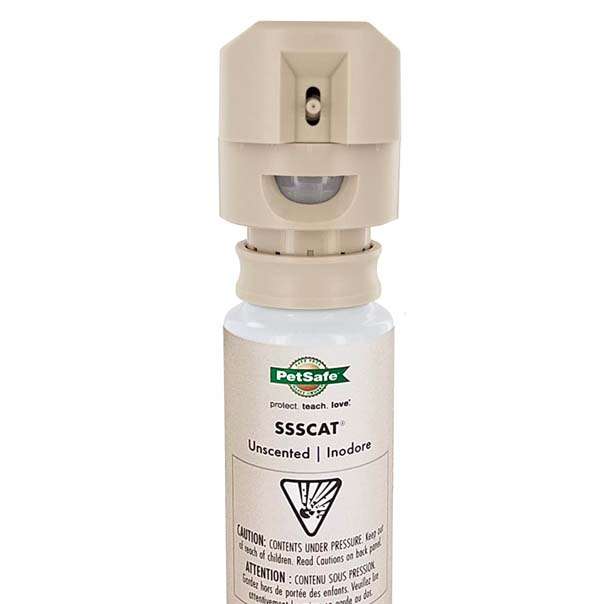How to Keep Cats off Furniture and Counters: A Comprehensive Guide for Frustrated Cat Owners
As a cat owner, you’ve likely faced the challenge of keeping your feline friend off your furniture and kitchen counters. We love our furry friends, but let’s face it: sometimes their adventurous nature can lead them to places they shouldn’t be, like our furniture and kitchen counters. These curious creatures love to explore, jump, and climb, but their adventures can lead to scratches on your favorite couch or unsanitary situations on the countertops. If you’re looking for valuable information and solutions to prevent your cat from transforming your furniture into their personal jungle gym, you’ve come to the right place!
How to keep cats off furniture and counters?
The key to keeping cats off furniture and counters involves using deterrents such as aluminum foil, double-sided tape, or scat mats, combined with positive reinforcement and providing alternative entertainment like cat trees and toys. Cat-proofing your home and offering dedicated cat spaces also helps in managing this behavior.
Read on to find more detailed information on various methods and strategies to keep your home harmonious and cat-friendly!
In this comprehensive guide, we’ll cover everything you need to know about keeping cats off furniture and counters. We’ll delve into the reasons behind their climbing instincts, explore various deterrents, and offer practical training tips. We’ll also discuss alternative solutions and address some common questions and concerns related to this topic. By the end of this post, you’ll be well-equipped with strategies and advice to help you maintain a harmonious home with your furry friend.
Why Cats Love Getting on Furniture and Counters

Cats are natural-born climbers and explorers, so it’s no surprise that they can’t resist the allure of furniture and countertops. To better understand how to keep them off these surfaces, let’s dive into the instincts and behaviors that drive cats to climb and jump.
The call of the wild
Cats are descendants of wild felines, which relied on their climbing skills for survival. Climbing trees and other elevated surfaces allowed them to escape predators, hunt prey, and find safe spots to rest. Although domesticated cats don’t face the same threats, these instincts still run deep. Jumping onto furniture and counters is simply a natural expression of their wild heritage.
Seeking a bird’s-eye view
Cats are curious creatures, and being up high gives them a better vantage point to survey their surroundings. From a high perch, they can watch over their territory and keep tabs on any potential threats or interesting happenings. Furniture and countertops offer them an excellent observation deck, which can be hard for them to resist.
The need for security
Cats feel safer when they’re up high. Elevated surfaces provide a sense of security, as they can avoid potential dangers lurking on the ground. This is why you might find your cat perched on a bookshelf or the top of the refrigerator – they’re seeking a safe haven where they can relax without worry.
The warmth factor
Cats are heat-seekers, and they love to find warm, cozy spots to lounge in. Many countertops and furniture pieces, especially those near windows or heating vents, offer the perfect combination of warmth and elevation that cats find irresistible.
Food association
Kitchen counters are often associated with food preparation, and cats are naturally attracted to the smell of food. This can be a significant motivator for them to jump onto countertops, hoping to find a tasty treat or at least investigate the source of the enticing aroma.
Asserting dominance
Cats are territorial animals, and they use height to establish dominance. A cat that claims the highest spot in the room is essentially saying, “I’m the boss around here.” Climbing on furniture and counters may be your cat’s way of asserting their place in the hierarchy of your home.
Did you know? Cats’ exceptional climbing skills can be attributed to their retractable claws, strong leg muscles, and flexible spine. These adaptations enable them to scale surfaces with ease, making it no wonder they love to jump and climb!
Understanding your cat’s natural instincts and behaviors can help you empathize with their desire to climb and explore. By keeping these factors in mind, you’ll be better equipped to tackle the challenge of keeping them off furniture and counters.
Prevention: Establishing Boundaries from the Start

Prevention is always better than cure, especially when it comes to your feline friend’s love for climbing furniture and countertops. Establishing boundaries early on can help nip this behavior in the bud before it becomes a habit that’s difficult to break. In this section, we’ll discuss the importance of setting boundaries and training your cat from the get-go, with a touch of humor to keep things lighthearted.
The power of consistency
Cats are creatures of habit, and they’ll quickly learn what’s acceptable and what’s not if you’re consistent in your approach. To avoid confusion, make sure everyone in your household is on the same page regarding the rules for your cat. For instance, if your cat is allowed on the couch but not on the countertops, ensure that everyone enforces this rule. It’s like teaching your cat the “house rules” – you wouldn’t want them to think they’re above the law, would you?
Starting young
Training your cat to stay off furniture and counters is much easier when they’re young and impressionable. If you’re bringing home a kitten, start setting boundaries from day one. Just like teaching a child good manners, the sooner you start, the better ingrained the behavior will be.
Positive reinforcement
Cats are more likely to respond to positive reinforcement than punishment. Instead of scolding or spraying them with water when they jump onto forbidden surfaces, reward them with treats, praise, or playtime when they stay off those areas. This way, they’ll associate staying off the furniture with positive experiences, making them more inclined to obey the rules. Learn more about using positive reinforcement techniques in our detailed section below.
Pro tip: Invest in a clicker to mark the exact moment your cat exhibits the desired behavior, followed by a treat or praise. This helps your cat understand precisely what they’re being rewarded for and can speed up the training process.
Redirecting their energy
Cats are like furry little parkour enthusiasts – they just can’t help but leap and climb. Instead of trying to suppress their natural instincts, provide them with appropriate outlets for their energy. Cat trees, scratching posts, and wall-mounted perches are great alternatives that can help satisfy their climbing urges without putting your furniture at risk.
Establishing boundaries from the start is crucial in preventing your cat from turning your furniture and countertops into their personal playground. With consistency, positive reinforcement, and a healthy dose of humor, you’ll be well on your way to a harmonious household where both you and your cat can coexist happily.
Did you know? Some cats have a knack for finding the most inconvenient places to nap, like your freshly laundered clothes or your laptop keyboard. By providing them with cozy alternatives like a warm, comfortable cat bed, you can save yourself the trouble of constantly shooing them away from your belongings.
Using Positive Reinforcement Training

When it comes to training your feline companion, positive reinforcement is the cat’s meow! This training method revolves around rewarding good behavior, making it an effective and humane way to teach your cat the dos and don’ts of living in harmony with their humans. In this section, we’ll explain the concept of positive reinforcement in training and offer tips on how to effectively use it to encourage desired behavior.
What is positive reinforcement?
Positive reinforcement is a training technique that focuses on rewarding desired behavior rather than punishing undesirable actions. By reinforcing good habits with rewards like treats, praise, or playtime, you create a positive association in your cat’s mind, making them more likely to repeat the behavior in the future. It’s like saying, “Good job, Fluffy! You’ve earned yourself a treat for not using the sofa as a scratching post.”
Tips for effectively using positive reinforcement
- Timing is key: To make the most of positive reinforcement, it’s crucial to reward your cat immediately after they exhibit the desired behavior. This helps create a clear connection between their actions and the reward, allowing your cat to understand what they’re being praised for.
- Choose the right reward: Different cats have different preferences when it comes to rewards. Some might be food-motivated, while others might prefer playtime or a gentle scratch behind the ears. Experiment with various rewards to see what works best for your cat, and use it consistently during training sessions.
- Keep rewards varied and interesting: To keep your cat engaged and motivated during training, mix up the rewards you offer. Alternate between different types of treats, toys, or attention to prevent your cat from getting bored with the same old reward.
- Pair a verbal cue or a clicker with the reward: Using a verbal cue like “off” or a clicker when rewarding your cat can help them associate the sound with the positive experience, making it easier for them to understand what you want from them in the future. This way, you can eventually phase out the reward and simply use the cue or clicker to communicate the desired behavior.
- Be patient and consistent: Training your cat to stay off furniture and counters might take time, so be patient and consistent with your training sessions. Rome wasn’t built in a day, and neither will your cat’s impeccable manners.
Using positive reinforcement to keep your cat off furniture and counters is a win-win situation for both you and your furry friend. Not only does it create a stronger bond between you and your cat, but it also fosters a more enjoyable and harmonious living environment. After all, who wouldn’t want a well-behaved cat that respects your furniture and countertops?
Did you know? Cats have a shorter attention span than dogs, so it’s essential to keep training sessions short and sweet, lasting around 5 to 10 minutes. This helps maintain your cat’s interest and prevents them from getting bored or frustrated.
Solutions to Deter Cats from Furniture

Sometimes, the best offense is a good defense. In the battle to keep your cats off furniture and counters, there are a variety of deterrents that can help you protect your precious surfaces while still keeping your feline friend happy. From natural scents to homemade sprays and store-bought products, let’s explore the different ways you can deter cats from claiming your furniture as their own personal kingdom.
Scents to keep cats off furniture
Cats have an excellent sense of smell, which can be used to your advantage when trying to keep them off furniture. Some scents act as natural deterrents for our feline companions, making them less likely to leap onto your favorite armchair or kitchen counter.
- Rosemary: Cats are often repelled by the scent of rosemary. Sprinkling dried rosemary or using rosemary essential oil in a diffuser may help keep them away.
- Citrus, orange peels or sprays: Cats are often repelled by the scent of citrus fruits. Placing citrus peels or spraying citrus juice in problem areas can help deter them.
- Peppermint: The strong scent of peppermint can be unpleasant to cats and may discourage them from certain areas. Sprinkling dried peppermint or using peppermint essential oil in a diffuser may be effective.
- Vinegar: Cats dislike the smell of vinegar. Cleaning counters and other surfaces with a mixture of vinegar and water can help deter them.
- Coffee grounds: Sprinkling used coffee grounds around problem areas can help keep cats away, as they find the scent unappealing.
- Vinegar: Cats aren’t fans of the smell of vinegar, making it an inexpensive and readily available option for deterring them from furniture. Mix equal parts water and white vinegar in a spray bottle, and spritz it on the surfaces you’d like to protect.
- Essential oils: Certain essential oils, such as lavender, eucalyptus, and lemon, can be effective at deterring cats from furniture. A few drops mixed with water in a spray bottle can do the trick. However, it’s crucial to use these oils sparingly and in a diluted form, as concentrated essential oils can be harmful and toxic to cats. For more information on safe usage, check out this article from the Pet Poison Helpline.
Did you know? Cats have up to 200 million olfactory receptors, while humans only have around 5 million. This means that cats have a far more sensitive sense of smell than we do!
Homemade spray recipes
If you’re feeling crafty, you can create your own homemade sprays to keep cats off furniture. Here are a few simple recipes to get you started:
- Citrus spray: Mix 2 cups of water with the juice of 1 lemon and 1 orange. Add a few drops of lemon or orange essential oil for extra potency. Cats dislike citrus smells, making this an effective deterrent.
- Eucalyptus spray: Combine 2 cups of water with 15 drops of eucalyptus essential oil. Shake well before use. The strong scent of eucalyptus can help keep your cat at bay.
When using homemade sprays, be sure to test them on a small, inconspicuous area of your furniture first to ensure they don’t cause any damage or discoloration.
Products to keep cats off furniture
For those who prefer store-bought solutions, there are various products on the market designed to keep cats off furniture:
- Indoor Scat Mat with plastic spikes: These mats can be placed on furniture or counters where pets are not expected to climb. The plastic spikes are uncomfortable for cats to walk on, deterring them from the area.
- Scat Mat with electronic correction: When the pet steps on the mat, they will feel a safe yet startling correction that discourages them from entering the off-limits area.
- Sticky tape: Cats dislike the feeling of sticky surfaces on their paws. Applying double-sided sticky tape to your furniture can deter your cat from jumping up. The downside is that it might not be the most visually appealing option.
- Motion-activated sprays: These devices emit a harmless burst of air when they detect motion, startling your cat and discouraging them from jumping on furniture. They’re effective but can be pricey, and some cats might become desensitized to the air bursts over time.
When it comes to deterring cats from furniture, there’s no one-size-fits-all solution. You might need to experiment with different scents, homemade sprays, and products to find what works best for you and your feline friend. Remember, consistency is key, and with patience and persistence, you’ll have a home where both you and your cat can coexist happily.
To help you decide on the best solution for keeping your cat off furniture and counters, we’ve created a handy table outlining the pros, cons, and effectiveness of various methods. Check it out below!
| Solution/Product | Pros | Cons | Effectiveness |
|---|---|---|---|
| Rosemary | Natural and non-toxic; easy to find | May need frequent reapplication; not visually appealing; not suitable for all surfaces; messy | Moderate |
| Citrus peels/sprays | Natural and non-toxic; refreshing scent | May need frequent reapplication; not visually appealing; potential for staining furniture; sticky | Moderate |
| Peppermint | Natural and non-toxic; pleasant scent | May need frequent reapplication; not visually appealing; not suitable for all surfaces | Moderate |
| Vinegar | Inexpensive, Natural and non-toxic; can clean surfaces; easy to find | Strong odor; may need frequent reapplication; potential for staining furniture | Moderate |
| Coffee grounds | Natural and non-toxic; can recycle used grounds; easy to find | May need frequent reapplication; not visually appealing; not suitable for all surfaces; messy | Moderate |
| Aluminum foil | Inexpensive; easy to find; temporary solution | Not visually appealing; may need frequent replacement; not suitable for all surfaces | Moderate |
| Essential oils | Natural and non-toxic; various scents available | May need frequent reapplication; potential for harm if not diluted properly | Moderate |
| Double-sided Tape | Easy to use, inexpensive | Can be unsightly, may damage furniture surfaces | Moderate |
| Indoor Scat Mat (plastic spikes) | Effective; safe; reusable; easy to clean | May be uncomfortable for cats; may not blend well with home decor; potential initial cost | High |
| Scat Mat (electronic correction) | Effective; safe; reusable; adjustable intensity | May be uncomfortable for cats; requires batteries; may not blend well with home decor; potential initial cost | High |
| Commercial repellent products | Designed for this purpose; may offer longer-lasting results; easy to apply | May contain chemicals; cost may be higher than natural solutions; potential for allergies | High |






Solutions to Keep Cats off Counters

Just like furniture, countertops can be irresistible to our feline friends who are looking for the perfect vantage point to survey their kingdom. However, having cats on counters can be unhygienic, and you might want to maintain a cat-free zone in the kitchen. In this section, we’ll discuss why it can be difficult to keep your cat off the counter, analyze the effectiveness of using aluminum foil as a deterrent, and provide training tips to help you establish boundaries and maintain a cat-free countertop. For various solutions that apply to both furniture and counters, refer to the table we provided in the previous section.
Why can’t I keep my cat off the counter?
Keeping your cat off the counter can be challenging for many reasons. Cats are naturally curious and love to explore their surroundings, so it’s not uncommon for them to be drawn to high surfaces like counters. Additionally, if your cat has been allowed to jump on counters in the past, it might be difficult for them to break the habit. Training cats to stay off counters often requires patience, consistency, and a little creativity. Common mistakes in training include:
- Inconsistent enforcement of rules
- Not providing alternative high perches
- Using negative reinforcement, which can backfire
Does aluminum foil keep cats off counters?
Aluminum foil can be an effective deterrent for keeping cats off counters. Many cats dislike the sensation of walking on foil and are deterred by the crinkly noise it makes. To use aluminum foil properly:
- Cover the entire counter surface with foil.
- Make sure the foil is secure and won’t easily slide off the counter.
- Replace the foil as needed, especially if it becomes dirty or torn.
However, aluminum foil might not be the most practical or visually appealing solution, and some cats may not be bothered by it at all. In these cases, other methods like scat mats or scent-based deterrents may be more effective.
Training tips to keep cats off counters
Training your cat to stay off counters can be a gradual process, but with consistency and patience, you can achieve success. Here are some step-by-step tips to help you get started:
- Provide alternatives: Make sure your cat has access to high perches or cat trees in other parts of your home. This will give them a more desirable place to jump and climb.
- Make counters unappealing: Use deterrents like aluminum foil, double-sided tape, or scents that cats dislike. See the table in the previous section for a comparison of various solutions.
- Be consistent: Whenever you catch your cat on the counter, calmly and gently remove them. Consistently enforcing the rule is crucial for success.
- Reward good behavior: When your cat chooses to stay off the counter and use their designated perches, reward them with praise, petting, or treats.
- Try positive reinforcement: Train your cat to respond to a command like “off” by rewarding them when they jump down from the counter. This can help reinforce the desired behavior.
- Address underlying issues: If your cat is constantly on the counter due to food-seeking behavior, make sure they have a consistent feeding schedule and access to fresh water.
It’s important to remember that every cat is different, and what works for one may not work for another. Be patient, and don’t be afraid to try different methods until you find one that works for you and your cat. And most importantly, always use positive reinforcement and avoid punishment, as this can damage your relationship with your cat and make the problem worse.
Health Concerns: Cats on Counters and Bacteria

As adorable as our feline friends can be, it’s essential to recognize that there are potential health concerns associated with having cats on countertops. Cats walk on various surfaces throughout the day, including their litter boxes, and can transfer bacteria and germs to the places they climb on. In this section, we’ll address these health concerns and offer tips on how to maintain cleanliness and reduce health risks.
Bacteria and your cat’s paws
Did you know that your cat’s paws can be a breeding ground for bacteria? Cats often walk through dirt, grime, and, let’s face it, their litter boxes. As a result, their paws can carry bacteria like E. coli and Salmonella. When your cat jumps onto your kitchen counter, they can transfer these bacteria to your food preparation surfaces, potentially contaminating your meals.
Tips to maintain cleanliness and reduce health risks
While it’s crucial to train your cat to stay off counters, accidents do happen. Here are some tips to help you maintain cleanliness and reduce health risks associated with cats on countertops:
- Clean and disinfect surfaces regularly: Wipe down your countertops with a mild detergent and warm water or a disinfectant specifically designed for kitchen surfaces. This will help eliminate any bacteria that your cat may have left behind.
- Keep food covered and stored: To prevent contamination, always cover your food and store it in sealed containers. This will not only protect your meals from bacteria but also reduce the temptation for your cat to investigate the delicious smells wafting from your dinner plate.
- Create a designated space for your cat: If your cat insists on being part of the kitchen action, consider creating a designated space for them that’s separate from your food preparation areas. This could be a comfortable perch or bed where they can watch you cook without getting in the way or contaminating surfaces.
- Wash your hands frequently: As a general rule, always wash your hands before and after handling food, especially when you’ve been petting your cat or touching surfaces they’ve walked on.
- Trim your cat’s nails: Regularly trimming your cat’s nails can help reduce the amount of dirt and bacteria they carry. Additionally, it can help minimize damage to your countertops if they do decide to jump on them.
By taking these precautions and training your cat to stay off the counters, you can enjoy a cleaner, healthier kitchen and maintain a happy home for both you and your feline friend.
Alternative Solutions to Keep Cats Off Furniture or Counters

While keeping cats off furniture and counters is an essential part of maintaining a clean and organized home, it’s also crucial to provide alternative solutions that allow your feline friend to be entertained and engaged. By redirecting their energy, cat-proofing your home, and offering appropriate scratching surfaces, you can ensure a happy and healthy environment for both you and your cat.
Redirecting your cat’s energy
Cats are curious and energetic creatures by nature. If you want to reduce their desire to jump on furniture and counters, consider providing them with engaging alternatives. Some suggestions include:
- Cat trees: Cat trees are a fantastic way to give your cat a space of their own, where they can climb, perch, and scratch without damaging your furniture.
- Toys: Interactive and stimulating toys can keep your cat entertained and channel their energy into more appropriate activities.
- Puzzle feeders: These feeders can turn mealtime into a fun and engaging experience, as your cat will need to use their intelligence and problem-solving skills to access their food.
Cats are three-dimensional creatures…They are climbing animals.”
– Dr. Nicholas H. Dodman, BVMS, Professor Emeritus at Tufts Cummings School of Veterinary Medicine
Tip: Redirecting Your Cat’s Energy
Did you know that cats love to jump because they are “three-dimensional creatures with a vertical dimension that is part of their natural inclination”? Providing them with alternative high perches, like cat trees or shelves, can satisfy their curiosity and keep them off your countertops.
Cat-proofing your home
Making your home more cat-friendly doesn’t mean allowing your feline companion to take over your living space. Here are some tips on cat-proofing your home while keeping them off furniture and counters:
- Cover furniture: Use furniture covers or blankets to protect your sofas and chairs from scratches and fur. This can also make cleaning easier.
- Use deterrents: Strategically place deterrents like the ones mentioned in our table earlier to discourage your cat from climbing on counters and furniture.
- Create dedicated cat spaces: Set up specific areas in your home for your cat, such as cozy beds, perches, or window seats where they can relax without causing any harm.
Tip: Positive Reinforcement Over Punishment
Dr. Borns-Weil recommends avoiding harsh punishments like water pistols or electric shock mats to discourage jumping. Instead, focus on providing exercise, play opportunities, and safe perching spots to create a happier cat and maintain a strong bond with your feline friend.
The role of cat trees, scratching posts, and pads
Providing appropriate scratching surfaces, like cat trees, scratching posts, and pads, can help deter your cat from scratching furniture and satisfy their natural instincts. Cat trees can also prevent cats from looking for higher ground on counters and other spots in your home.
Here are some tips on choosing and placing cat trees, scratching posts, and pads effectively:
- Choose the right size: Make sure to select a cat tree, post, or pad that’s the appropriate size for your cat. Bigger cats may need sturdier and larger structures.
- Opt for variety: Offer a mix of vertical and horizontal scratching surfaces to cater to your cat’s preferences.
- Placement is key: Place scratching posts and pads near your cat’s favorite spots or areas where they tend to scratch furniture. Position cat trees near windows or other areas where they can observe their surroundings.
Embracing the Counter
Dr. Nicholas Dodman believes that humans should adjust their environment to cater to their cats’ natural need for high places. He suggests using window inserts, carpeted cat posts, ladders on bookcases, or plate-like cat shelves to create a cat-friendly space. By doing so, you can prevent anxiety and maintain a healthy relationship with your cat. (Source: Dr. Nicholas H. Dodman, Tufts Cummings School of Veterinary Medicine)
By implementing these alternative solutions, you can keep your cat entertained, satisfied, and off your furniture and counters, making for a happier home for both you and your furry friend.
Frequently Asked Questions
In this section, we’ll address some of the most common questions and concerns related to keeping cats off furniture and counters. By understanding the underlying reasons and providing effective solutions, we can help you create a harmonious living space for both you and your feline companion.
Why do cats jump on furniture and counters?
Cats are natural climbers and enjoy being in high places. They jump on furniture and counters to satisfy their curiosity, observe their surroundings, and feel safe from potential threats. Additionally, cats may be attracted to the scent of food or other interesting items on counters.
How long to train a cat to avoid furniture and counters?
The amount of time required to train a cat to stay off furniture and counters varies depending on factors like the cat’s age, personality, and the consistency of the training. With patience, persistence, and positive reinforcement, most cats can learn to avoid these areas within a few weeks to a few months.
Are essential oils safe for cats as deterrents?
Yes, there can be health risks associated with using essential oils as a deterrent for cats. Some essential oils, when used undiluted or in large quantities, can be toxic to cats. Always dilute essential oils with water and use them sparingly. Be sure to research which oils are safe for cats before using them.
Can commercial cat repellents be used on all furniture types?
Before using a commercial cat repellent on your furniture, it’s important to test it on a small, inconspicuous area to ensure it won’t damage the material. Follow the manufacturer’s instructions and recommendations to ensure the safety and effectiveness of the product.
How to keep my home cat-friendly and protect furniture?
To make your home more cat-friendly while keeping them off furniture and counters, consider providing alternative spaces for your cat to explore, play, and relax. Cat trees, window perches, and cozy beds can give your cat their own designated areas. Additionally, using deterrents and training techniques can help keep your cat away from off-limits areas.
With the right strategies and a bit of patience, you can successfully keep your cat off furniture and counters, ensuring a happy and healthy environment for both you and your feline friend.
Conclusion
In conclusion, keeping cats off furniture and counters can be a challenging task, but with patience, consistency, and the right techniques, it’s possible to create a harmonious living environment for both you and your feline friend. Let’s recap the main points of this blog post:
- Understand your cat’s natural instincts and motivations for climbing on furniture and counters.
- Utilize various deterrents, from natural scents like citrus and rosemary to commercial products and Scat Mats, to discourage unwanted behavior.
- Maintain cleanliness in your home to reduce health risks associated with cats on counters.
- Redirect your cat’s energy with cat trees, toys, and other enrichment options to keep them entertained and engaged.
- Cat-proof your home by providing dedicated cat spaces, covering furniture, and using deterrents strategically.
- Implement training techniques and positive reinforcement to encourage desired behavior.
- Address common questions and concerns to ensure you’re well-informed and equipped to tackle this challenge.
Remember, every cat is unique, and what works for one might not work for another. Be patient and persistent in your efforts, and don’t be afraid to try new strategies if something isn’t working. With time and dedication, you can establish boundaries that will help protect your furniture and counters while still providing a happy and enriching environment for your beloved feline companion. And who knows, maybe one day you’ll catch your cat lounging on their designated cat tree instead of your freshly cleaned countertop, making all your efforts worth it!

